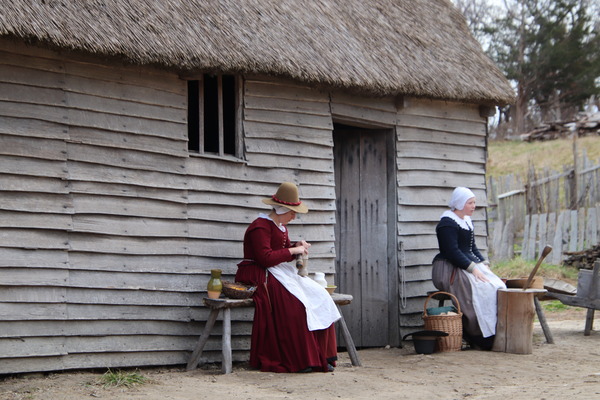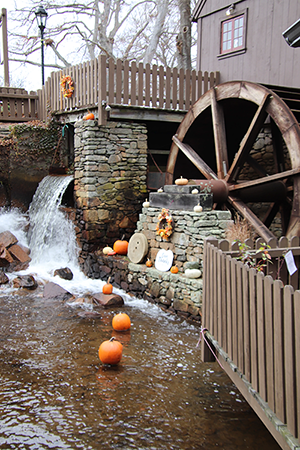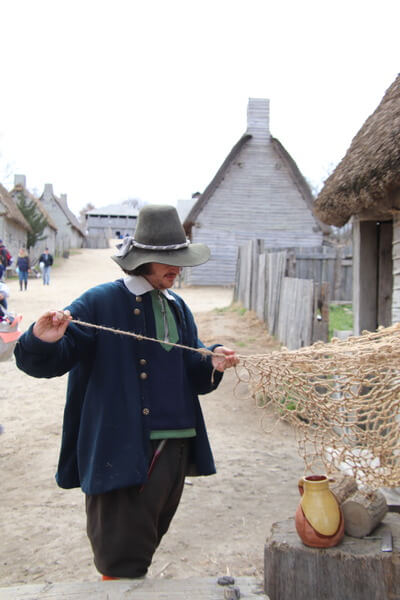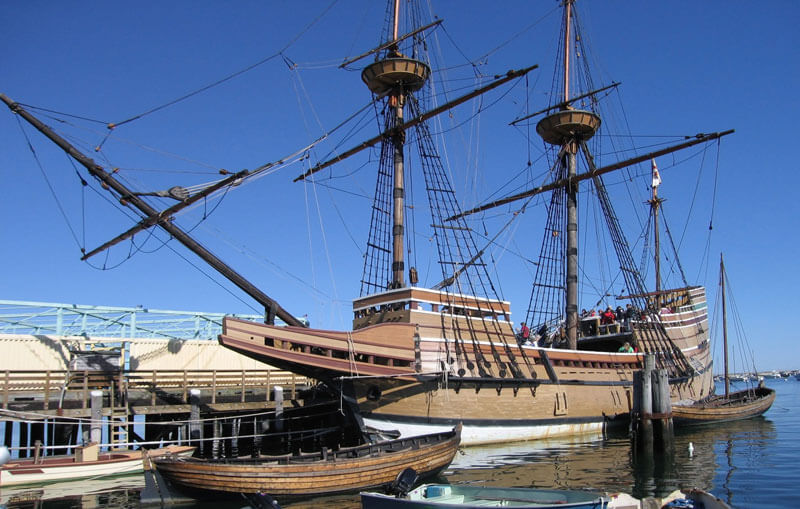Museum
Plimouth Patuxet Museums
Though the Pilgrims on the Mayflower came ashore in what would become Provincetown before setting out again, most folks associate the Mayflower with Plymouth. On the western shore of Cape Cod Bay, you’ll find the Plimoth Patuxet Museums.
A visit to these historical sites is like a step back in time, with museum employees in period dress, recreating scenes of daily life in years past. For those looking to learn more about the settlers and the indigenous tribes of the region there’s lots to offer, from demonstrations to interpreters and more.
When to Visit the Patuxet Museums
 All of the Plimoth Patuxet Museums are open seven days a week 9am to 5pm, from April 1st to the Sunday after Thanksgiving. The other attractions, the Mayflower II recreation and Plimoth Grist Mill are open 9 to 7 and 9 to 5 respectively. A heritage pass to visit all three sites costs $44.95 for adults, $40.45 for seniors and $28.95 for kids.
All of the Plimoth Patuxet Museums are open seven days a week 9am to 5pm, from April 1st to the Sunday after Thanksgiving. The other attractions, the Mayflower II recreation and Plimoth Grist Mill are open 9 to 7 and 9 to 5 respectively. A heritage pass to visit all three sites costs $44.95 for adults, $40.45 for seniors and $28.95 for kids.
At Historic Patuxet Museums you’ll learn about the history of the native peoples who have lived in coastal Massachusetts for the past 12,000 years. Interpreters will guide you through the site, learning about indigenous life in the 17th century. In addition, the interpreters can answer questions about the culture and traditions that continue to this day.
You can step inside a wetu to learn about homelife or watch a demonstration of a staff member creating a dugout canoe using fire and shells to form the vessel. The museum reports that there are approximately 5,000–6,000 Wampanoags today, with most living in Massachusetts. The Cape and Islands are home to the two federally recognized tribes in Aquinnah and Mashpee.
The recreation of Plymouth Colony takes guests back to the 17th century English village that the Mayflower’s passengers formed. The timber framed houses, kitchen gardens, heirloom livestock and reenactors bring the history to life, allowing guests to wander through the past.
Guests can chat with people working in the gardens, processing corn, and take part in games, chores, and activities of the time period.
The Plymouth Grist Mill is a reconstruction of the 1636 grist mill found on Town Brook. The site diverted water from the brook to power a water wheel which in turn powered large millstones used to grind corn. The cornmeal can still be sampled and ordered, or guests can just observe the process!
The Mayflower II can also be explored. The full-scale reproduction of the ship returned to Plymouth to commemorate the 400th anniversary of the Pilgrims’ landing. At 106 feet long and 25 feet wide, guests can imagine how crowded it would have been on a trans-Atlantic voyage. Square rigged, the vessel has four masts.

Finally, visitors can explore the Craft Center, wandering through the traditional medicinal gardens, learning about the Doctrine of Humors that guided medical treatment in the period. Explore herbal remedies, learning more about how they were created and administered. The Craft Center also features potters making replicas of 17th century English pottery.
These fascinating, historic Patuxet Museums are certainly worth a visit when you are visiting “America’s Hometown”. To find more in Plymouth to explore, read our Day Trip to Plymouth.







